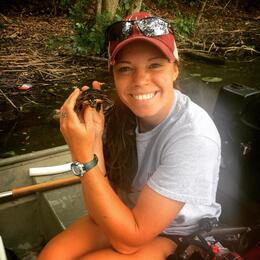This is a time of year to slow down, rest, and notice some of nature’s treasures that are hidden or missed earlier in the season. Migratory birds are gone and the forests and fields become still, quiet, and settle into dormancy for the looming winter. With branches left bare, intriguing clumps of leaves and sticks start to draw our eyes’ attention. Or that shrub we walked by a hundred times now has a tiny but carefully constructed nest at eye-level. It was there all season right under our nose! Perhaps like me, you’re left wondering which species went to all the trouble of making that talented little cup, or if it’s a nest at all. Could it be a squirrel? A hawk? Just a spot where debris got tangled?
In the spring and summer, a careful eye can often determine which bird a nest belongs to by identifying the parent species or by the color and shape of eggs. But what do we do when the parents are gone and the nest empty? Fortunately, there are still clues we can use to narrow it down. A field guide, like Peterson’s Birds’ Nests of Eastern North America or the Cornell Lab of Ornithology’s NestWatch site, are great tools, but we can start more generally. Asking questions about geographical area, habitat type, height off the ground, and nest structure, size, and material will help point in us the right direction.
- Area and habitat type— Is the nest in a coniferous, deciduous or mixed forest? Is it in a grassy or shrubby field or a wet area near flowing or stagnant water? Which food resources does that habitat provide (fish, berries, nuts, insects)?
- Location— Is the nest on the ground, low in a shrub, at the top of a tall mature tree, up on a big platform, in the elbow of a branch, on a building structure, or even an unusual place, like a flower pot?
- Nest style— Is it a cavity like a birdhouse or a tree? Is it a neat cup, a suspended hanging basket, an enclosed dome with a side entrance, or just a scratch in the ground? Is it a single nest on its own or is it in a group of other similar looking nests?
- Preferred nesting material— Does it contain mud, feathers, sticks, pine needles, grasses, mosses, or other dominant components?
Many birds fit into these broad categories, with some species like robins and crows being generalists that build their nests in many places. Other species are much more specific about the location, materials, and characteristics of their nests. There’s a lot of variety, but here are some examples of commonly encountered nests.
Telling Similar Nests Apart
Eastern Grey Squirrel vs a Bird’s Nest: Squirrels often choose cavities in trees where they are available, but the nests they build in tree branches are often mistaken for a bird’s nest. These open squirrel nests in treetops, called dreys, are always made of large clumps of broad leaves. Very few birds use leaves for the main nesting material, so that can often be a pretty clear sign. For example, bird nests of a similar size, such as an American Crow nest, will only be made of pencil-sized sticks. Red-tailed Hawks, for another example, also build similar-looking nests, but are primarily constructed of dry sticks, with an inner cup lined with bark strips and leaves. These hawks like to nest high, up to 120ft off the ground in a nest tree taller than the surrounding trees, where squirrels will not build that high.
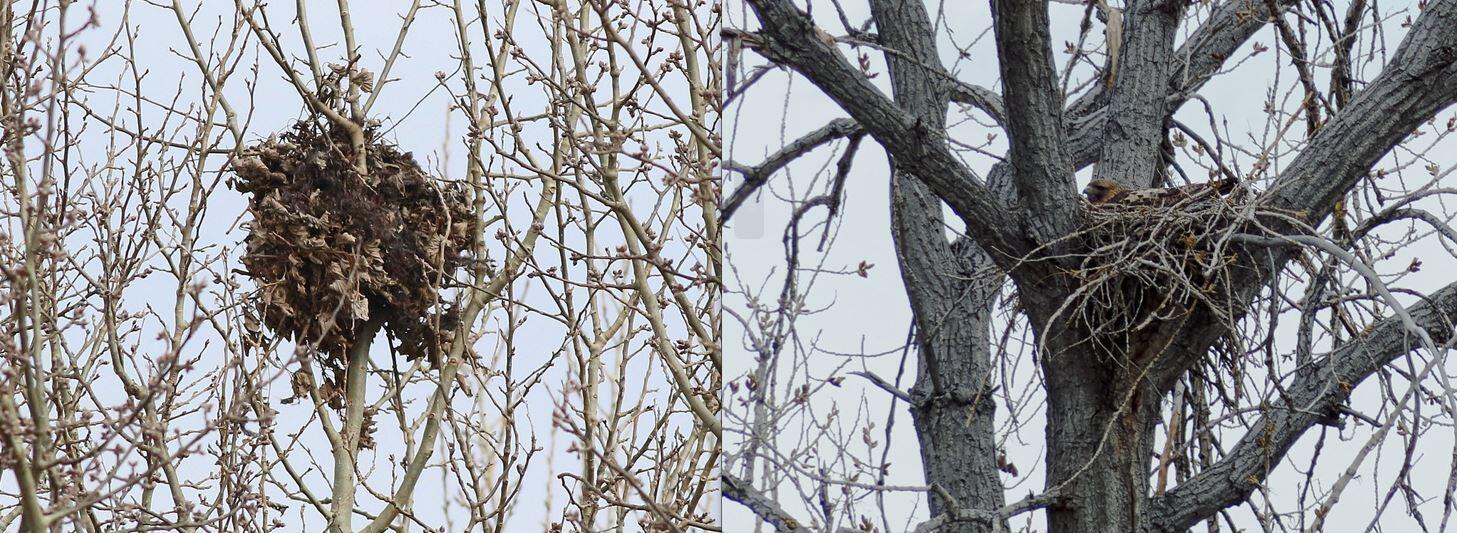
Colonial nests of Great Blue Herons vs American Crows: Crows will nest practically anywhere, but prefer tall, densely growing trees with broad branches and solid tree forks. Crows like to be in groups more often than they like to be alone, but they are not necessarily colonial nesters like the Great Blue Heron, cormorants, egrets, and other species. Grouped crow nests will be over dry land, but grouped Great Blue Heron nests will always be over open water in dead trees in swamps.

Bald Eagle vs Osprey: Both of these long-lasting stick-based nests are almost always found near open water and get built upon and reused year after year. Bald Eagle nests are truly massive and heavy, with some of the oldest able to support the weight of a human. Bald Eagle nests are often just below the top of a tall tree on the water's edge. On the contrary, Ospreys prefer to build their smaller nests at the very tippy top of a structure in a flatter shape that doesn't get as deep. Ospreys will use treetops, but regularly build on platforms and powerline towers, when a Bald Eagle will not.
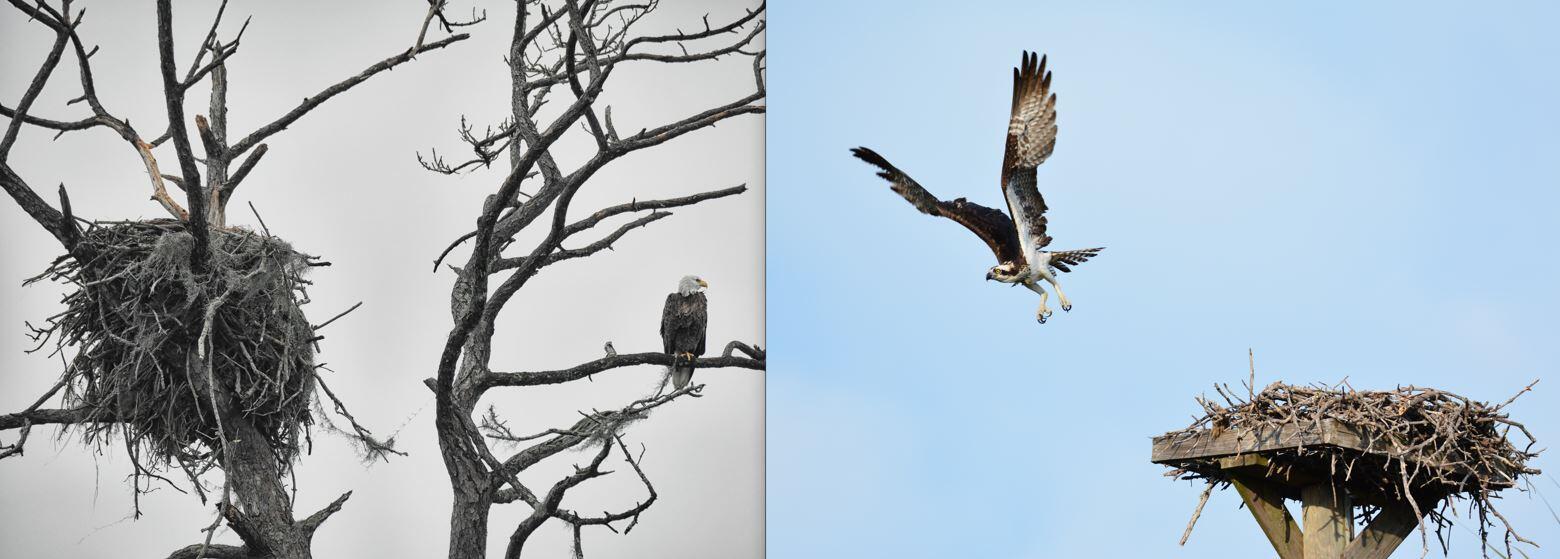
Box-users: Eastern Bluebirds, Tree Swallows, House Wrens, and Black-capped Chickadees are all cavity nesters that may use artificial nest box structures, but there are nest-building clues that tell who occupied it for the season. Bluebirds use grasses and pine needles. Tree Swallows also use grasses and pine needles, but add feathers on top which are often arranged to cover the eggs (how endearing). House Wrens usually make a messy nest of coarse twigs that fill the box. Male House Wrens may build eggless "dummy nests" in nearby boxes to reduce competition. Chickadees are less likely to use nest boxs, but will lay a moss base, while nuthatches prefer to use bark shreds. Read more about the dimensions and details of box users here.
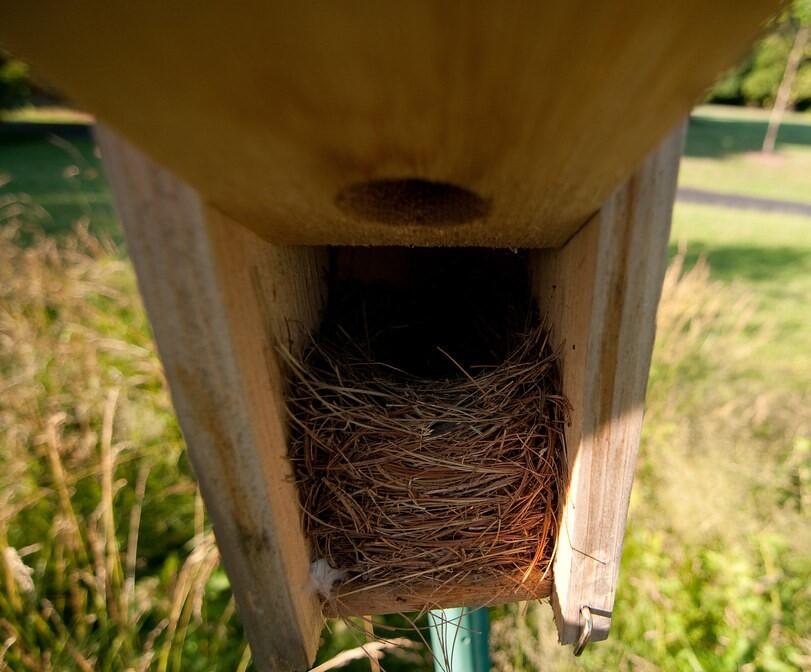
Red-winged Blackbirds vs Gray Catbirds: Nests of these two species can be confused because their structures look a lot alike—open cup nests constructed with grasses and twigs. To tell these species apart, consider the habitat. Red-winged Blackbirds prefer relatively open marshland, building their nests into tufts of cattails, grasses, or shrubs within a foot of the water or ground. Catbirds prefer to nest over dry land.
Scarlet Tanagers vs Rose-breasted Grosbeaks vs Mourning Doves: All of these species build very thin nests made entirely of twigs and that are often completely see-through in the winter. Scarlet Tanagers and Rose-breasted Grosbeaks both form cup nests on live branches, but can be distinguished by height off the ground-- tanagers prefer the tops of forest trees, where grosbeaks tend to nest in mid-story shrubs. Mourning Dove nests have a similarly flimsy structure but no visible cup and often nest in hanging flower baskets or other human-made structures. Mourning Doves don’t put a lot into the construction of their nests, which are often blown away before winter arrives (or they use the old nests of other species entirely).
Shrubland Species: Common Yellowthroats, Yellow Warblers, Indigo Buntings, Cedar Waxwings, Chestnut-sided Warblers, and Brown Thrashers are just a few of the many species that choose shrub areas to nest, with most preferring to be closer to the edge and building nests within 1-3 feet of the ground. Small details can help distinguish them: yellowthroats and Yellow Warblers like a wet environment, Chestnut-sided Warblers like a mixed or deciduous forest nearby, waxwings camouflage their cups with lichen, and Brown Thrashers particularly like dense shrubs with thorns.
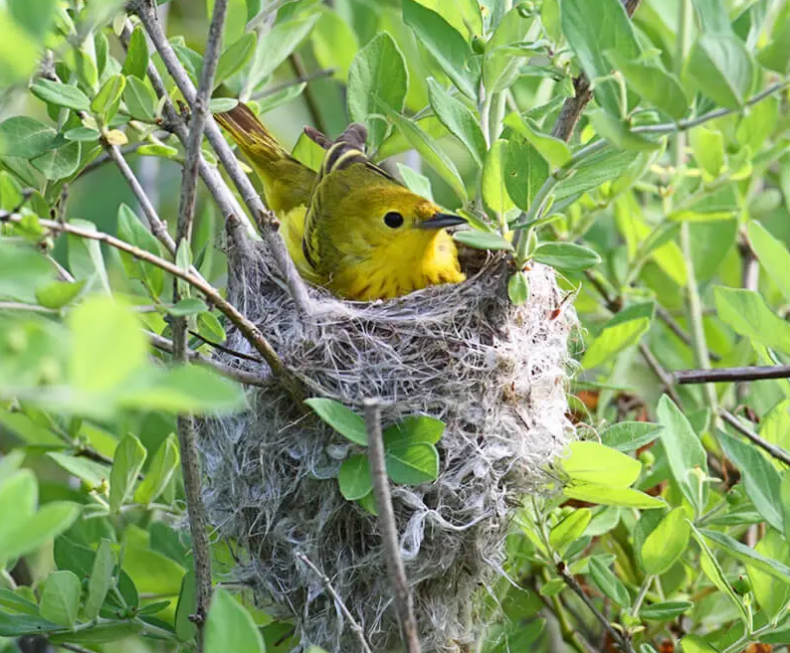
Unique Characteristics
Red-eyed Vireo: Built at any height and found in both forest interior and edges, but always in a deciduous tree and always a cup suspended and hanging in a small horizontal Y of a branch.
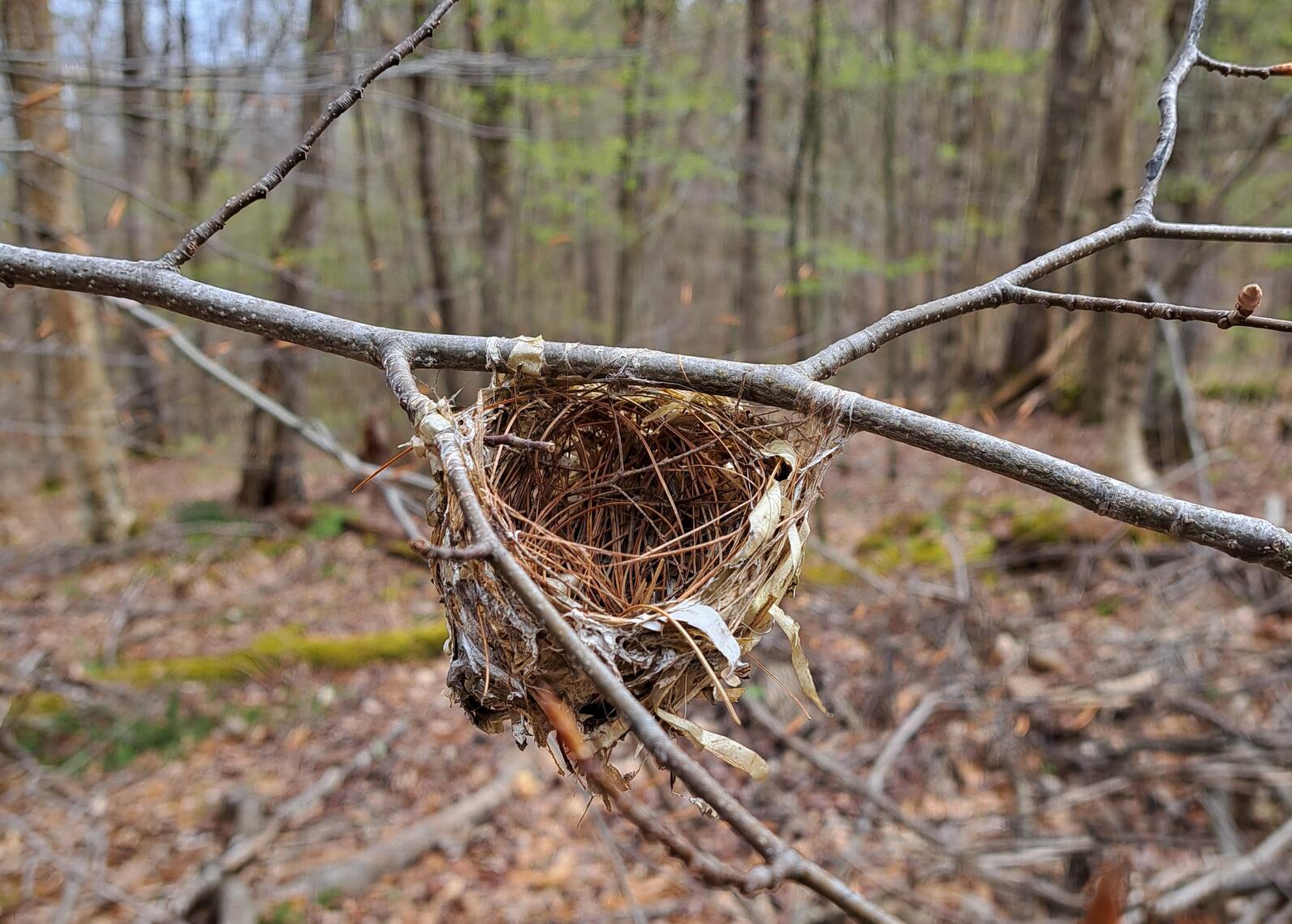
American Goldfinch: Although an open cup nest of average size and appearance, presence of droppings can be a dead giveaway, since they are the only local species of songbird that allows the accumulation of feces around the nest edge.
Baltimore Oriole: Intricately woven bags made of grasses, hanging at the tip of a branch, almost always high in a deciduous tree, and on the edge habitats (hedgerows or small forest/field patch transitions).
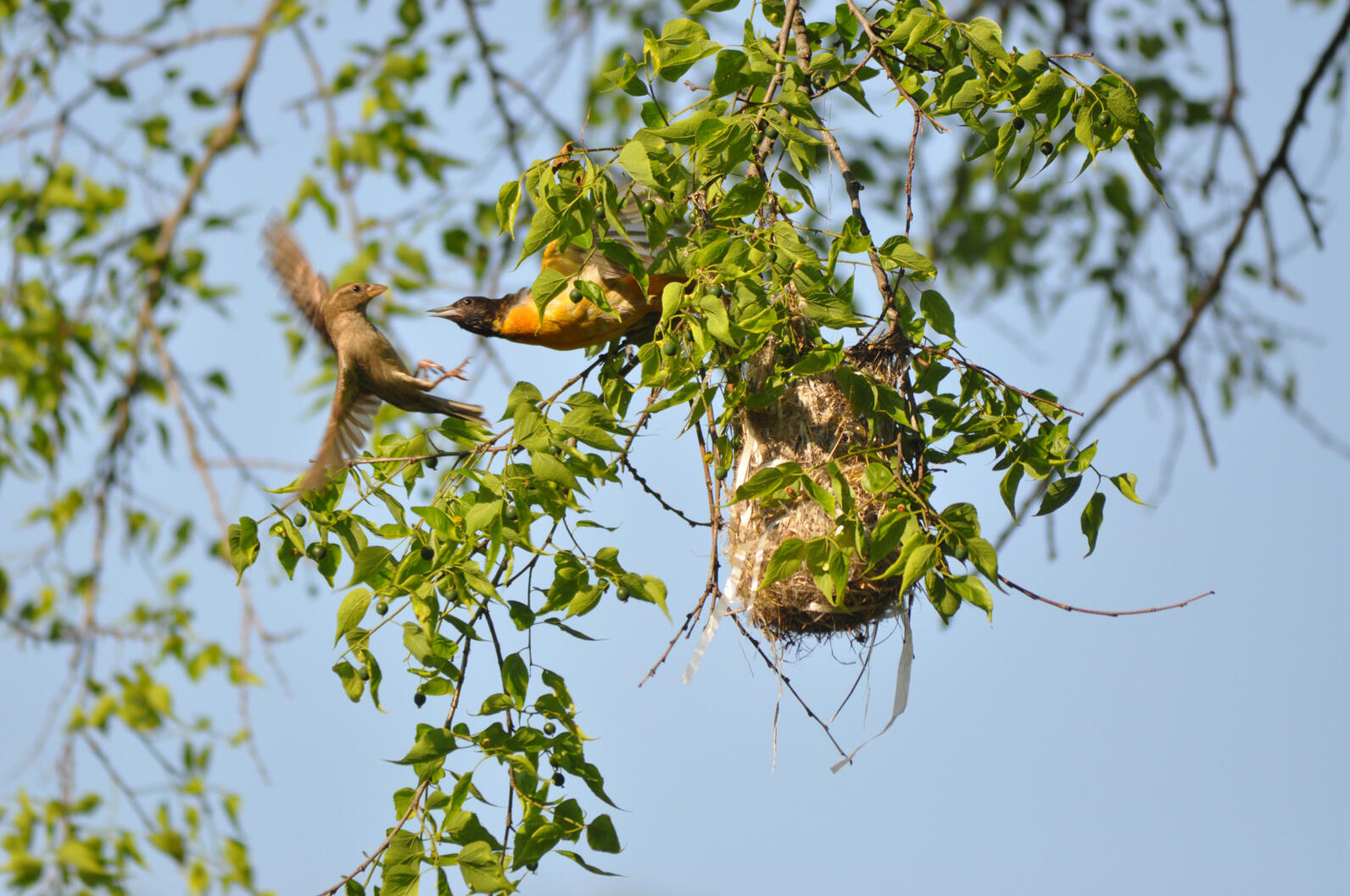
Ruby-throated Hummingbird: Tiny and unmistakable. This is the only species of hummingbird in Eastern North America, and no one else can fit in a teacup nest the diameter of a quarter. These flexible nests are often found cemented on the top side of tree branches, using soft plant material, spider webs, and flakes of lichen. Usually two eggs, the size of black beans, are laid and the parent may continue to enlarge the stretchy nest bigger as the nestlings grow. I mean COME ON how cute is that?
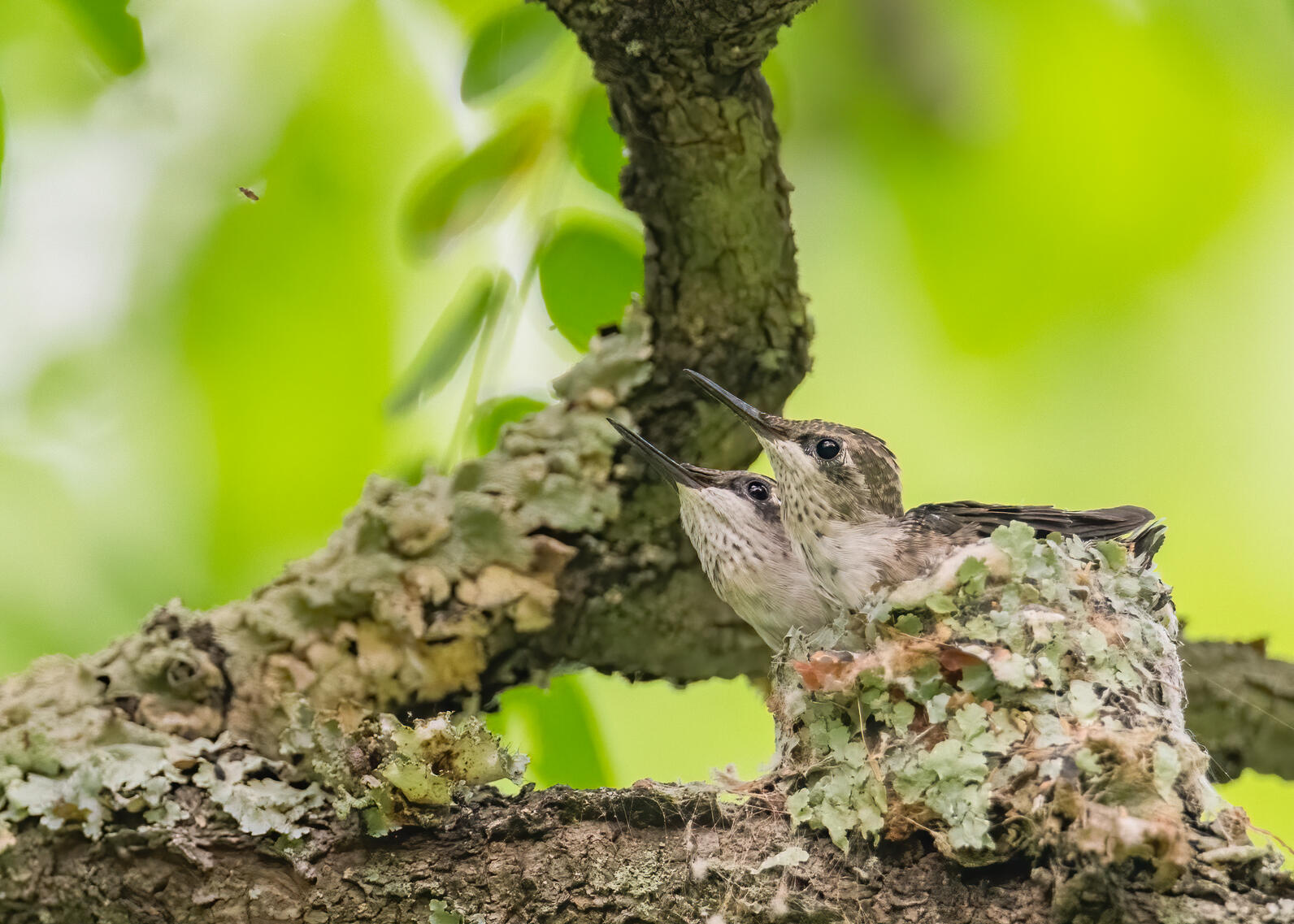
American Robin: These nests are found in many edge, forest, and field habitats as well as urban/suburban areas. They typically have a thick layer of mud on the top, like a ring of icing on a donut.
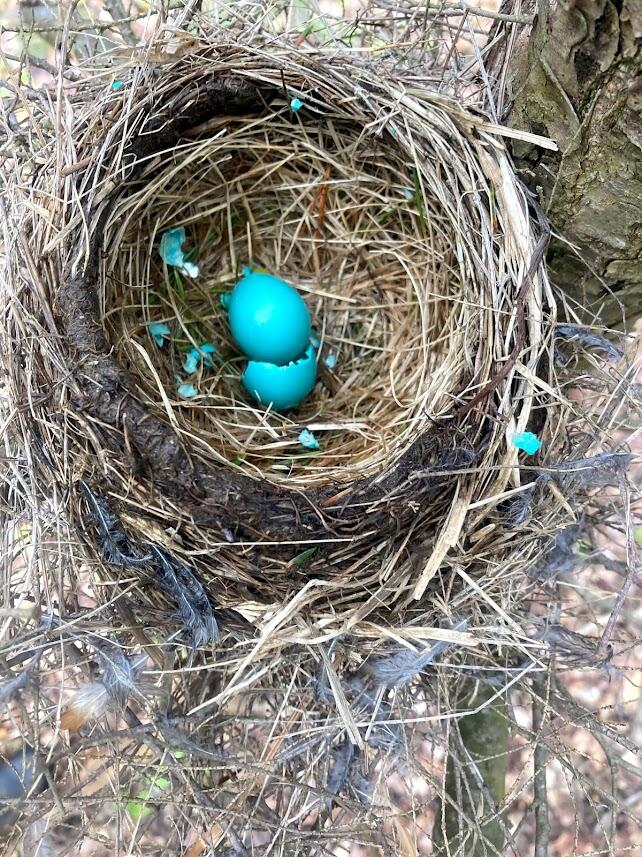
Barn Swallow: Their nests are lumps of mud cemented together by the use of their saliva to glue dirt and some twigs onto vertical walls of (usually man-made) structures.
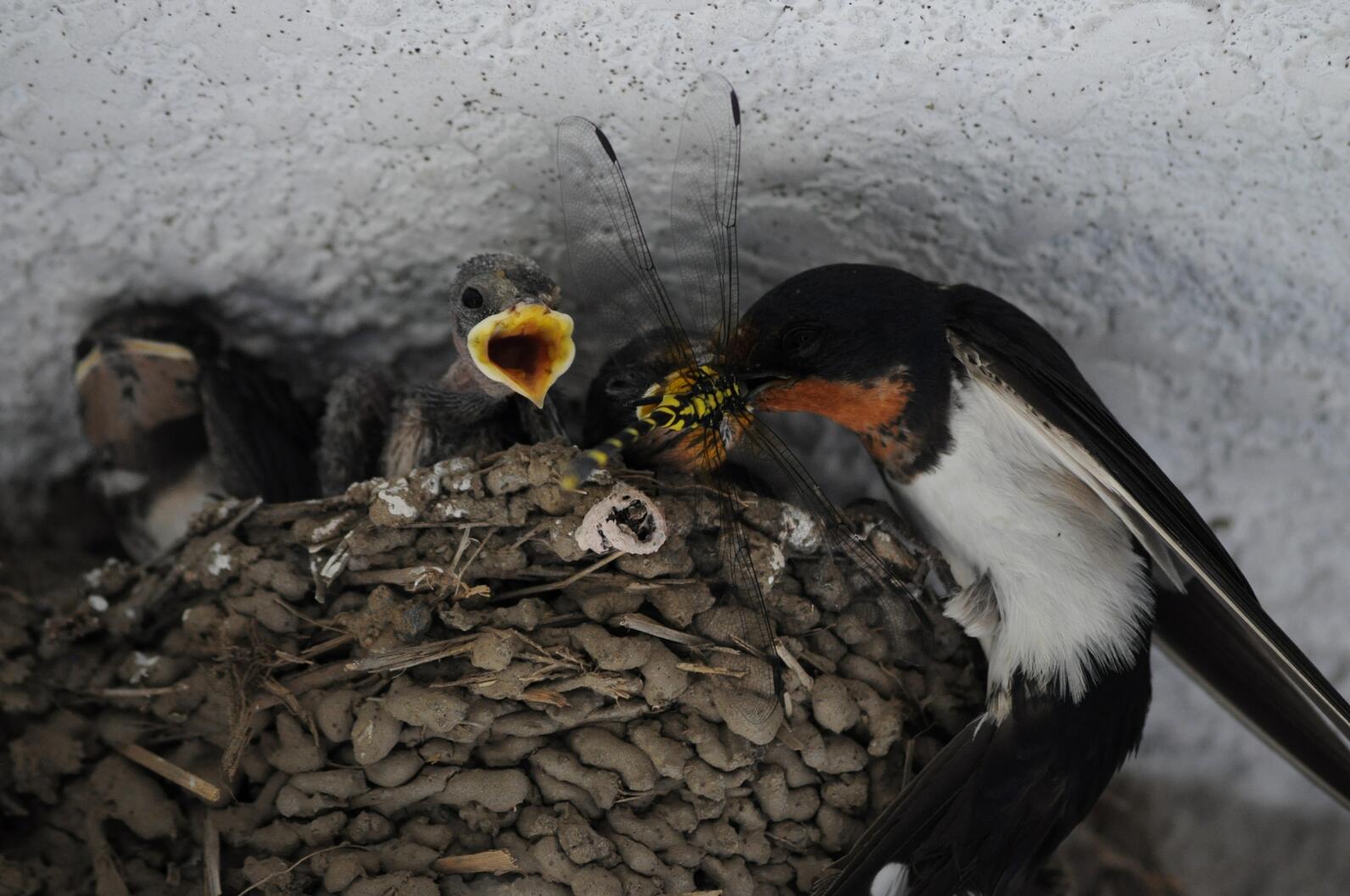
Winter Wren: Most commonly found in root tip-ups of wind-blown trees that have fallen over within a mixed mature forest.
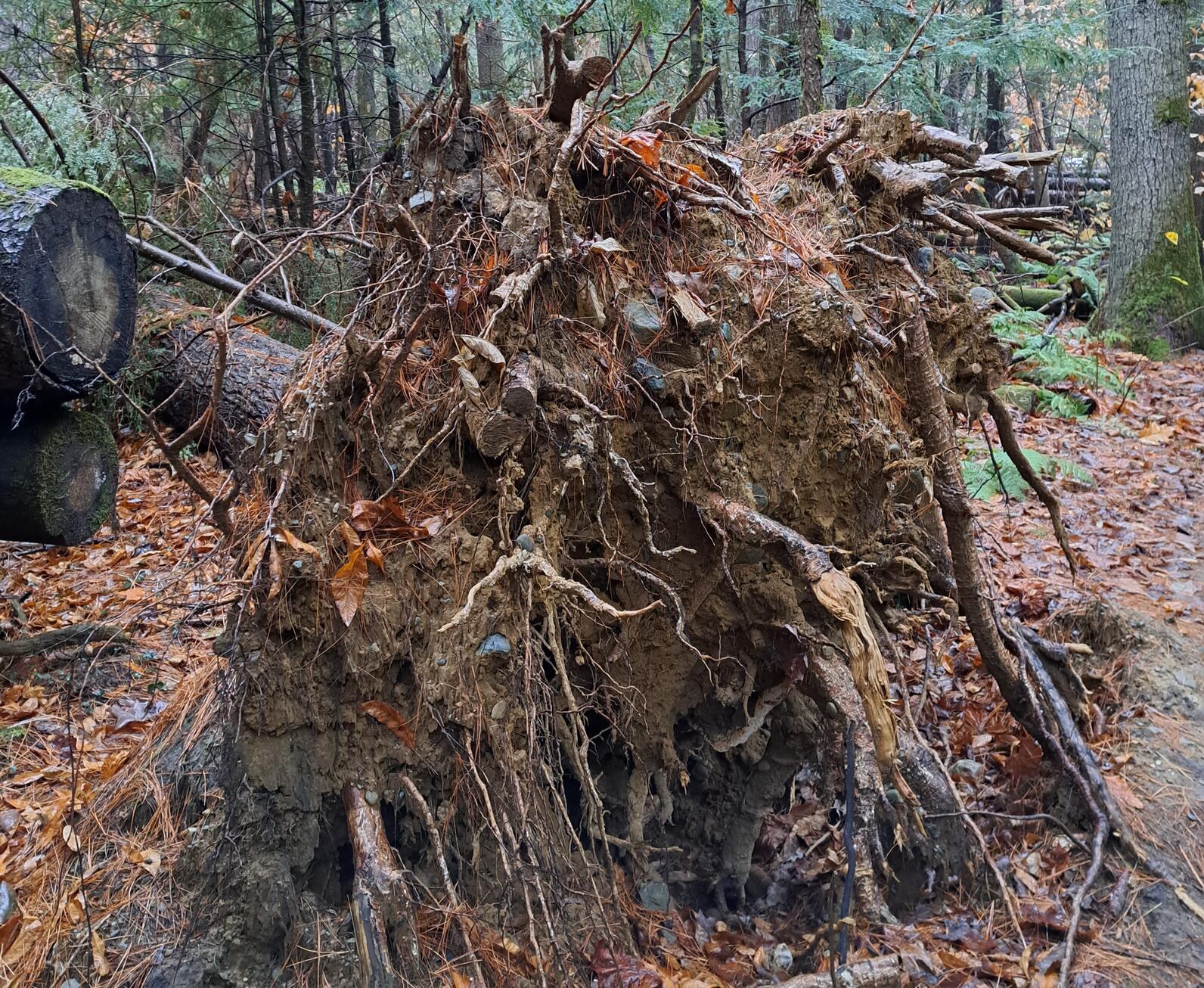
Learn more about bird nests, practice your identification skills, and complete a fun picture-matching activity on Audubon Vermont’s website here!
This article was infromed and inspired by the following sources. Visit the links below to read about more species in more detail.
Bernd Heinrich. 2009. Which Bird Made that Nest? Northern Woodlands Magazine. https://northernwoodlands.org/articles/article/which-bird-made-that-nest
Lauren D. Pharr. 2022. Beginner’s Tips For Identifying Backyard Bird Nests. Cool Green Science, Stories of the Nature Conservancy.https://blog.nature.org/2022/04/04/beginners-tips-for-identifying-backyard-bird-nests/
Smith, Elizabeth Zimmerman. 2023. Nests and eggs that may show up in bluebird nestboxes. https://www.sialis.org/nests.htm
Cornell Lab of Ornithology NestWatch. 2023. https://nestwatch.org/learn/how-to-nestwatch/identifying-nests-and-eggs/

